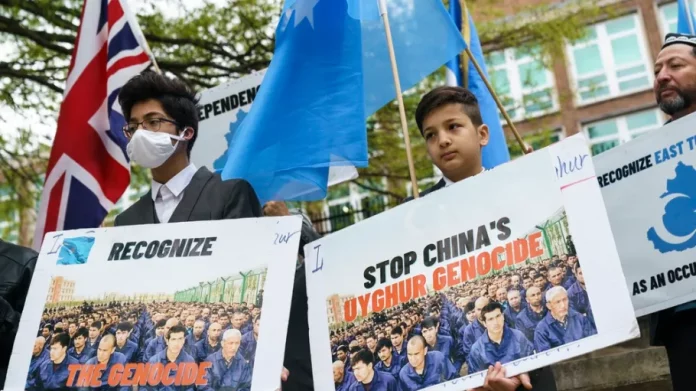China’s coercive labor transfer programs are the new detention camps, said Adrian Zenz, a leading academic on repressive policies on Muslim ethnic minorities in the Xinjiang Uyghur Autonomous Region.
Zenz’s latest update on Beijing’s so-called employment and “targeted poverty alleviation” schemes, to be published Thursday by the Jamestown Foundation, reveals an escalation in what he describes as a “non-internment state-imposed forced labor mobilization system,” one whose numbers in 2023 not only surpassed those from the previous year but also outstripped state-mandated quotas.
“Labor transfers are part of the new coercive strategy,” Zenz, a senior fellow in China studies at the Victims of Communism Memorial Foundation, told Sourcing Journal. “The internment camps were a targeted campaign planned to last for about five years in total. The forced poverty alleviation through employment-that is a long-term strategy, and I think that’s why we see that it is intensifying. It’s getting more comprehensive.”
The scope of the programs is also growing, he said. Whereas state-sponsored efforts to mobilize hundreds of thousands of Uyghurs into low-paying work placements previously took place, for the most part, within Xinjiang, authorities have “significantly” expanded the scale of the “pairing assistance” program to other provinces over the past year. The Xinjiang government itself openly declared last February a desire to increase the proportion of “poverty-alleviated laborers” to other provinces from 2.5 percent to more than 3.5 percent. Carried through, this would have resulted in the number of people transported from their home regions increasing by nearly 38 percent from 27,600 to 38,000.
That August, as documented by the official newspaper of the Central Committee of the Chinese Communist Party, Chinese leader Xi Jinping charged officials to “encourage and guide people from Xinjiang to find jobs in the mainland, and encourage and support people from the mainland to start businesses and live in Xinjiang.” The provinces of Anhui and Hubei received and continued to employ thousands of workers in 2023 alone, according to state media and documents.
“It’s quite significant because we’ve not had any evidence on those for about four years since early 2020; we’re seeing a lot of doubling down now,” Zenz said. He added that the move is particularly insidious because it results in what Chinese academics have dubbed the “demographic reengineering of Uyghur society-an ‘optimization’ of the ethnic population structure by removing Uyghurs out of the heartland and reducing the density of the Uyghur population.”


